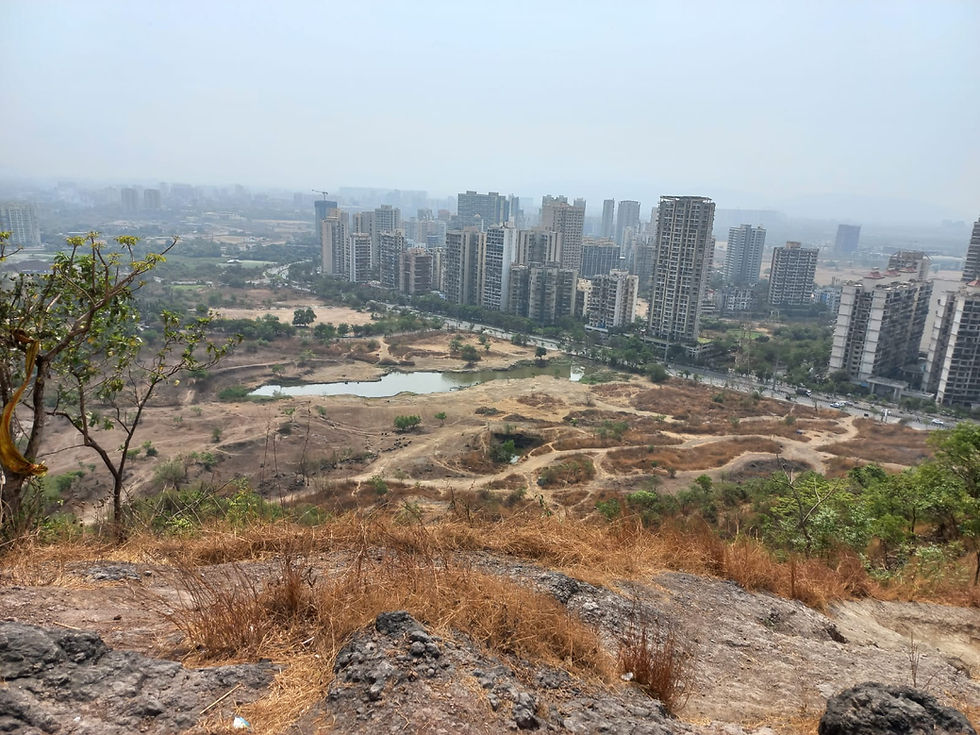Dragonfly Festival 2024: Looking at and for Dragonflies at Surajpur
- Symrna Darkmorph

- Nov 11, 2024
- 3 min read
Updated: Apr 18
With the Dragonfly Festival 2024 going on, I decided to pay attention to dragonflies as well on my recent birdwatching trip to Surajpur with like-minded birders. We started the birdwatching trail at 6.30 am in the morning with low visibility due to smog. As we started, we were greeted by a shy Golden Jackal being coy and sly watching us as we watched it.

Initially, we could hear purple sunbirds, indian white-eye, warblers, etc. and it wasn't untill 9.50 am that the sun started to come up and the dragonflies became more active. My friend and fellow birder, Devendra helped me with clicking dragonfly pictures which I later uploaded on iNaturalist app for identification and the amazing identifiers from the Dragonfly festival 2024 had an ID for my pictures almost instantly.
So why pay attention to Dragonflies and Damselflies?
Dragonflies and damselflies, nature's silent guardians, have long been our allies in the battle against disease-carrying mosquitoes. These agile aerial predators have historically kept mosquito populations in check, contributing to a healthier urban environment.
However, as our cities have undergone rapid transformation, these beneficial insects have found their habitats shrinking and their numbers dwindling. The consequences of this decline are becoming increasingly evident, with a surge in cases of dengue and malaria.
Their presence is often linked to a healthy aquatic ecosystem, free of pollution and rich in biodiversity. Dragonfly nymphs and adults are top predators in many aquatic food webs. Dragonfly nymphs are particularly voracious predators, feeding on a variety of other invertebrates. As predators, they bioaccumulate toxins, affecting the entire food chain.
How does this work?
According to a blog by Watershed Canada , while a single dragonfly might not be fatally poisoned, higher predators like frogs and birds that consume many dragonflies can accumulate harmful toxins as a result of their diet. This can lead to illness or even death, especially for top predators like hawks and falcons.
Thus, Dragonflies serve as water health indicators in two ways: their long aquatic life stage and their role as a food source for other animals.Their presence signals a healthy ecosystem, making them valuable bio-indicators.
Here's what I saw:

A grizzled pintail
It is a small dragonfly with blue eyes. Its thorax is azure-blue marbled with black to form a beautiful pattern on the dorsum and the sides. Abdomen is uniquely trumpet-shaped azure-blue, marked with black.
It prefers marshy, swampy areas. This azure blue beauty is not a strong flyer, preferring to stay low and flit through the reeds and tall plants bordering the weedy ponds and lakes where it breeds.

A Slender Skimmer or Green marsh hawk
This medium-sized dragonfly has a greenish-yellow body with black and pale markings and striking green eyes. It's often seen perched quietly on shrubs and twigs, but don't be fooled by its stillness - it's a fierce predator that eagerly hunts smaller butterflies and dragonflies.

A Coromandel Marsh Dart
This medium-sized damselfly has distinctive yellowish-green eyes. Its body is olive green on top and yellowish green on the sides, with a bright yellow abdomen. It prefers to breed in weedy ponds, ditches, and rice fields.

Lots of Scarlet Skimmers or Rudy Marsh Skimmers
Its eyes are a fiery red on top, fading to purple on the sides. The chest is a rusty brown color, sometimes even reddish on the back. The rest of its body is a dazzling blood red, except for the thin black stripe running down its back. This amazing dragonfly likes to hang out in ponds, ditches, marshes, swamps, and even rice fields to raise its young.

We also saw around 67 species of birds and were lucky enough to spot an Eurasian Hobby as well.
Dragonfly Festival BIOBLITZ Update 27 March 2025
I was delighted to see that though small in number I have made a contribution and it has been recognised.

These little things, go a long way for citizen science. It helps create valueble data based on which new environment policies and reforms can occur in the wildlife conservation space. If you're from around East Delhi or Near Nizzamuddin Area of Delhi, India, I encourage you to download the iNaturalist App on your phone and start making observations at Asita East DDA park , The Lodhi Garden and Sunder Nursery ParkJust make sure you GPS is on when you upload observation and see it on the Project Page.





Comments